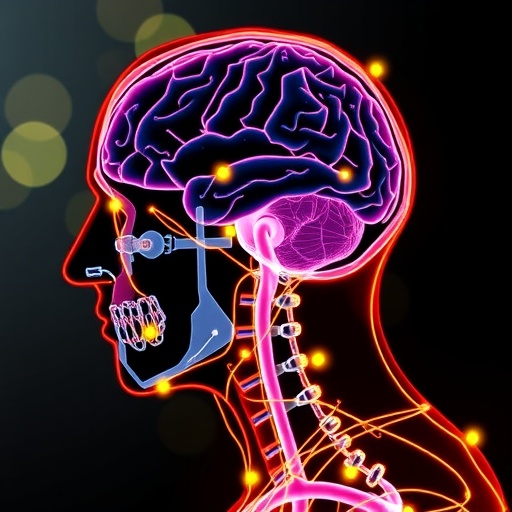In the past quarter-century, the global population living with Parkinson’s disease has surged dramatically, doubling in number. Despite this alarming rise, the clinical management and monitoring techniques for Parkinson’s have remained largely stagnant, trailing decades behind advances seen in other chronic illnesses. Conventional approaches rely heavily on subjective clinical rating scales administered during in-person examinations, which are often sporadic due to an acute shortage of specialists trained to manage this complex neurodegenerative condition. This scarcity results in patients often facing long intervals—sometimes spanning months or even years—between doctor visits, leaving them in a state of uncertainty about their disease progression and medication efficacy.
The traditional methods employed to evaluate Parkinson’s symptoms, such as assessing tremors, bradykinesia (the hallmark slowness of movement), and rigidity, involve subjective clinician ratings based on physical exams. These assessments are inherently variable, dependent on the examiner’s experience and perception, and often lack granular precision. To mitigate variability in research settings, videotaping clinical exams for later evaluation by independent reviewers has been employed; however, this method inherently fails to capture tactile data such as joint tone or rigidity that require physical interaction, which is essential for comprehensive patient assessment.
Recognizing these challenges, a research team led by Dr. Helen Bronte-Stewart at Stanford Medicine has pioneered a transformative approach that leverages digital technology to fill this critical monitoring gap. Their innovation centers around a compact, portable device named KeyDuo, paired with a smartphone-connected digital platform called Quantitative DigitoGraphy Care. This device captures intricate data from finger tapping exercises—translating minuscule variations in pressure, speed, and displacement into objective, quantifiable metrics that reflect Parkinson’s disease severity. The high-resolution sensor technology embedded within the KeyDuo allows for unprecedented detailed assessment of motor function, rendering traditional subjective scales obsolete.
.adsslot_sc7tqhygaO{ width:728px !important; height:90px !important; }
@media (max-width:1199px) { .adsslot_sc7tqhygaO{ width:468px !important; height:60px !important; } }
@media (max-width:767px) { .adsslot_sc7tqhygaO{ width:320px !important; height:50px !important; } }
ADVERTISEMENT
At the heart of this device lies a sophisticated mechanical design featuring tension-engineered levers, which measure rather than merely detect finger taps. Unlike conventional keyboards that register simple tap events, the KeyDuo’s levers precisely quantify the force exerted, the velocity of each press, and the exact lever displacement. This nuanced capture of tactile data enables the device to measure rigidity—a motor symptom traditionally only assessable through physical manipulation during clinical exams. With just two levers, patients perform repetitive alternating finger taps for 30 seconds, generating rich data in real time that can be remotely accessed by healthcare providers to evaluate symptom progression and adjust treatment plans dynamically.
Beyond measuring standard motor symptoms, recent investigations have uncovered the device’s capability to detect involuntary tremors, a quintessential and often elusive feature of Parkinson’s disease. Employing sophisticated statistical modeling, researchers established that the timing and amplitude of finger presses captured by the KeyDuo could identify tremor events with a remarkable sensitivity of 98%. This level of precision is unprecedented in non-clinical settings and represents a critical advancement in comprehensive symptom monitoring.
The implications of integrating this technology into patient care are profound. Currently, only a minuscule fraction—about 0.14%—of physicians are fellowship-trained movement disorder specialists capable of effectively managing Parkinson’s disease. Many patients never get seen by a neurologist, let alone a specialized clinician, leaving primary care providers often unprepared to evaluate or modify treatment effectively. The KeyDuo system offers these providers objective, quantitative data, enhancing their confidence and competence in managing Parkinson’s patients, despite their limited specialized training. This democratization of care holds promise for improving outcomes across broader populations.
From a research perspective, the potential benefits are equally transformative. Parkinson’s clinical trials have long struggled with the lack of objective, high-resolution endpoints, complicating therapeutic evaluations and slowing drug development. Remote digital monitoring can accelerate this process by facilitating patient recruitment—patients can participate from home without frequent specialized center visits—and by providing granular, continuous data that enhances the sensitivity and specificity of outcome measures. Consequently, trials can be conducted with fewer subjects and in shorter timelines, reducing costs and speeding access to novel treatments.
The genesis of this device is rooted not only in technological innovation but also in clinical insight. Dr. Bronte-Stewart’s experience working with performing artists suffering from dystonia led to the realization that a computerized keyboard used to measure motor control could differentiate symptom states. A Parkinson’s disease patient who tested the device on and off medication demonstrated distinct finger press patterns, indicating the device’s sensitivity to medication effects. Subsequent refinements focused on optimizing tactile sensing and data granularity, culminating in a system capable of assessing rigidity remotely—an achievement that had previously been deemed unfeasible.
Ultimately, these advancements could redefine Parkinson’s disease management by shifting from infrequent episodic assessments to a model of continuous, data-driven care. The marriage of wearable sensor technology with digital health platforms exemplifies a broader movement in medicine toward precision neurology, where objective quantification replaces subjective interpretation. By bridging geography and expertise gaps, this innovative approach promises to improve quality of life for millions worldwide and spur the development of novel therapies for a disease that remains stubbornly complex.
Subject of Research: People
Article Title: Remote real time digital monitoring fills a critical gap in the management of Parkinson’s disease
News Publication Date: 12-Aug-2025
Web References:
Nature Article DOI:10.1038/s41531-025-01101-0
Neuroscience: Translate Grant – Wu Tsai Neuroscience Institute
Fogarty Innovation Program
Stanford Medicine Catalyst
References:
Bronte-Stewart H, et al. Remote real time digital monitoring fills a critical gap in the management of Parkinson’s disease. Nature. August 12, 2025.
Keywords: Parkinson’s disease, neurological disorders, neurodegenerative diseases, digital health, motor monitoring, remote patient monitoring, wearable sensors, rigidity measurement, tremor detection, movement disorder specialists, telemedicine, precision neurology
Tags: advancements in Parkinson’s treatmentclinician training in Parkinson’s caredigital health solutions for chronic illnessenhancing patient care with technologyfuture of Parkinson’s disease researchInnovative healthcare technologiesneurodegenerative disease assessmentobjective symptom tracking methodsParkinson’s disease managementremote patient monitoringsubjective clinical evaluation challengestelemedicine for Parkinson’s patients





